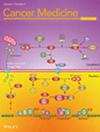Trends in the Treatment and Survival of Pancreatic Cancer: Analysis of 23,339 Patients Diagnosed Between 2010 and 2017
Abstract
Introduction
With a rising incidence and unchanged poor prognosis, pancreatic cancer is increasingly becoming a focus of gastroenterological oncology, but there is a lack of real-world data. The aim of the current study was to investigate trends in survival and treatment patterns by analyzing German health claims data.
Methods
Pancreatic cancer patients diagnosed between 2010 and 2017 were identified from the German Pharmacoepidemiological Research Database (GePaRD, approximately 20% of the German population). Data on demographics, tumor treatment within 1 year after diagnosis, and survival were extracted.
Results
The study population comprised 23,339 patients with a median age of 74 years (IQR 66–80) and 44% with localized and 56% with metastatic disease. Overall, 52.4% received any chemotherapy, and curative intended resection was performed in 28.3%. Neoadjuvant and adjuvant therapy were performed in 4.4% and 58.7% of the cases, respectively. The median overall survival of the whole study population was 7.84 months. Patients diagnosed in the most recent period (2014–2017) had a significantly better prognosis (8.20 months (95% CI 7.97–8.43)) than patients who were diagnosed in the earlier period (2010–2013) (7.54 months (95% CI 7.31–7.70), p < 0.001), with an age-, sex-, and stage-adjusted hazard ratio of 0.87 (95% CI 0.85–0.9). Over time, the most pronounced treatment trends have affected patients with localized disease, with increasing frequency of resection and neoadjuvant therapy and decreasing frequency of best supportive care.
Conclusion
This comprehensive insight into survival and treatment of pancreatic cancer in Germany shows presumably medically beneficial therapy trends with, however, only marginal improvements in prognosis to date.


 求助内容:
求助内容: 应助结果提醒方式:
应助结果提醒方式:


